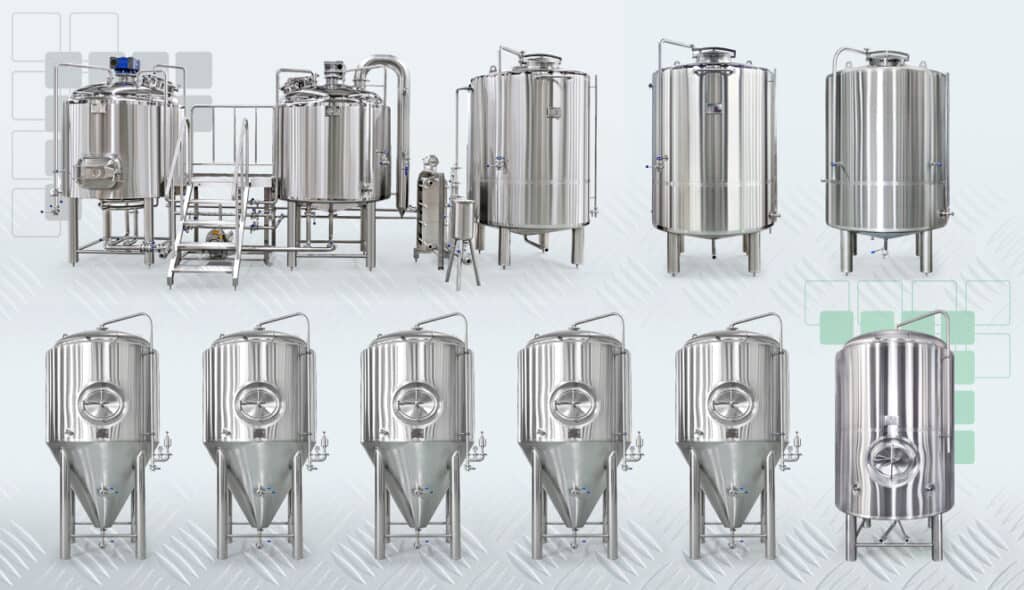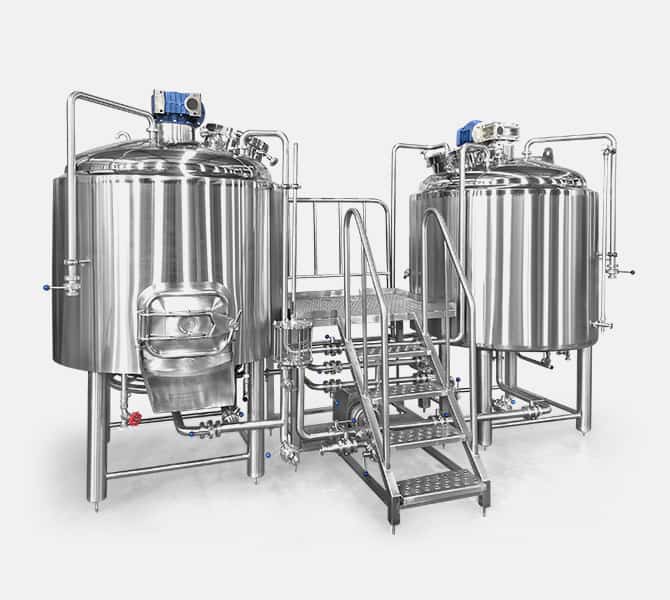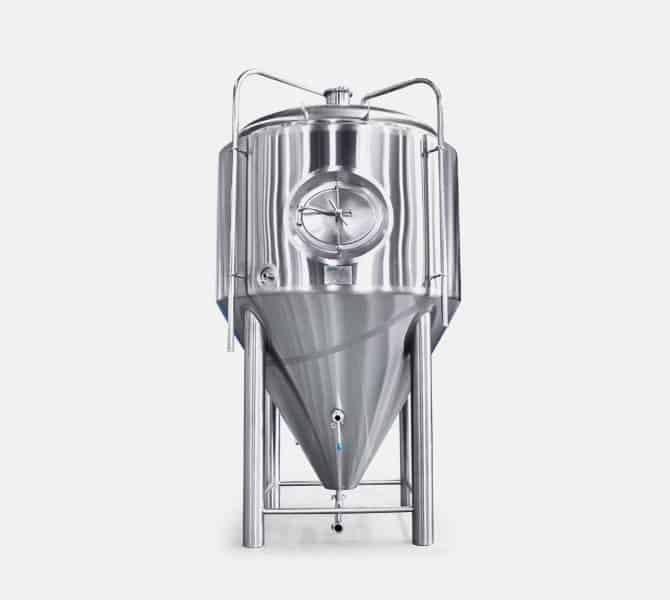Getting into the brewing industry as a newbie could be quite demanding, owing to its complexity and the prevalent competition in the global market. It could be more complicated adopting the turnkey brewing system.
Even though the trend of sales in the past few years seems promising, you’d still need to develop an efficient production line to be on top of the game.
So if you are planning to open a brewing plant, one of your top needs is to make a list of the equipment that would give you a competitive edge in your production. You will find all that should be included in a turnkey brewery project in this article. Keep reading!

Basic Information You Need
Before you start procuring equipment, you need to have a clear cut of what you want to achieve with your brewing plant. So, answer the following questions first.
- What types of beer will I be producing?
- Do I want them with the same signature series?
- What’s my anticipated production capacity per week?
- Which brewing process am I adopting?
Having answered these questions, the following are the equipment and facilities required.
Required Facilities and Equipment
1. Brewhouse
A brewhouse is a civil facility housing your brewing equipment, and of course, the first item to fix. For top-notch functionality, your building space should meet some requirements. You can employ specialists to take it up, but it’s all good if you want to handle the construction yourself. If you are erecting it yourself, it is best to have it before inviting technicians, maybe NDL craft or your chosen specialist. Below are the basic parameters that should be considered in your design and construction.
- Floor Space: Floor space must be adequate to have a well-coordinated working environment. And, of course, this depends on the number of fermenters you will be using in the brewhouse. Small-scaled production requiring only four 6HL CCT-fermenters requires about 40 square meters. The higher the number of fermenters, the wider the space required. Medium-scaled productions utilizing between five 10HL and 5 20HL CCT-fermenters require a floor space within the range of 70 – 80 square meters. And for larger productions, floor area requirements could be as high as 180 square meters.
- Ceiling height: Generally, ceiling height for brewery space is between 2.40 meters and 3.30 meters.
- Utilities: An average of 20 – 25kW is required to power small and medium brewing systems. However, you will need more for larger brewing systems. For water supply, between 400 and 500L is required for the production of every 100L of beer. Lastly, because of the huge amount of heat produced by kettles and other equipment, proper venting must be in place, especially for the fermentation and conditioning room.
- Finishes: Walls and floors should be finished with water-resistant materials and do not react to acids and alkaline.
- Drainage: A proper drainage system should be provided in all the spaces where spillage is likely to occur. This should include the fermentation and the boiling rooms.=
Signature series
NDL craft signature series offers a customized and highly efficient brewing system tailored to meet your brewing need. These electric brewhouses come in 2, 3, 4 and 5 vessels configurations. These systems offer unrivaled quality value in today’s world and ultracompetitive brewing solutions tailored to meet your need, space and budgets.

Master Series
The master series is an excellent brewhouse system designed for you. They come in top quality perfect for everyone looking for a turnkey solution. These master series include piping, fittings and automated control systems that help you monitor and manage your current batch. Master series offers you a cost-effective production with simple commissioning with fully automated systems.

2. Fermenters
Fermenters are essential to the brewing process. Like the brewhouse, there are basic requirements that must be considered while designing and constructing them. To start with, what are they? They are purpose-made barrels or tanks used for fermenting malt into beer. Occasionally, they are referred to as Fermentation Vessels. By and large, there are about seven types of fermenters that could be used in a brewery depending on the need in a brewery plant. However, they all function as bioreactors to manage the environment while growing microorganisms and cultured cells.
We have the Fluidized Bed Bioreactor, Loop/Air Lift Bioreactors, Membrane Bioreactor, Pulsed Column Bioreactor, Bubble Column Bioreactor, Photo Bioreactor, and Packaged Tower Bioreactor.
So how do you determine the number of fermenters that would be appropriate for your plant? It all depends on the anticipated production capacity per year. For example, if you intend to produce up to 1000HL yearly, five 10HL CCT-Fermenters would be required. And if you want to go as high as 4000HL of beer per year, you will need to have about five 40HL CCT-fermenters in operation.
The second question is the specification of materials that should be used in constructing fermenters. You have the free will to use stainless steel and glass fabricated with metal joints. However, whatever choice you are making must have sufficient resilience for the heat, pressure, and corrosion that comes to play during the brewing process.

3. Pumps
Pumps are required to convey liquids during the production process. Mainly, two types of pumps are used in the brewery industry. The first category is the sanitary centrifugal pump, which is purpose-made to transport liquids with minute solid materials at a relatively lower pressure than the other category. Centrifugal pumps have several variants, including the submersible, open impeller, multi-stage, and liquid ring. Positive displacement is the other category. On the other hand, it is used to transport viscous liquids used in the production process, like yeast.
However, before you choose which to use for your brewery project, the following parameters to be considered.
i. Static head: Te static head is important for a proper flow of liquid in pipes. In simple terms, it is the difference between the height of fluid in the suction tank and the discharge tank.
ii. Flow rate: Determine the flow rate required based on the type of liquid transported by different pipes and size the pipes accordingly.
iii. Pump power: Having established the static head and flow rate, the next thing to determine is the pump power. Pump power is calculated by multiplying out the static head, flow rate, density of the liquid, and acceleration due to gravity and divide the outcome by pump efficiency. Whatever figure you have is the pump power.
Once you have all these, review the sales catalog of suppliers and select the one that best serves your needs.
Other equipment you will need is a Malt mill, hydrometer, tank, kettles, and dispensing equipment. Whichever specialist you employ will give you a master series necessary for the smooth running of your brewhouse.
Conclusion
Now you have a checklist to use for your turnkey brewery project. But be sure to procure the equipment with adequate consideration of your anticipated production capacity.
